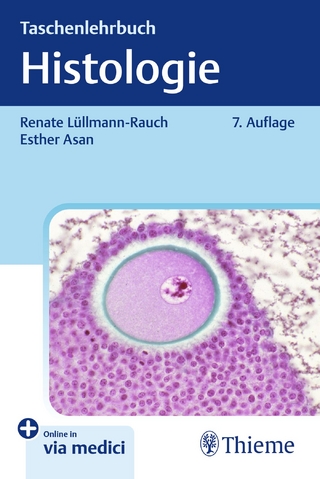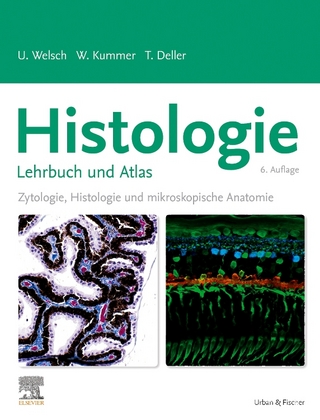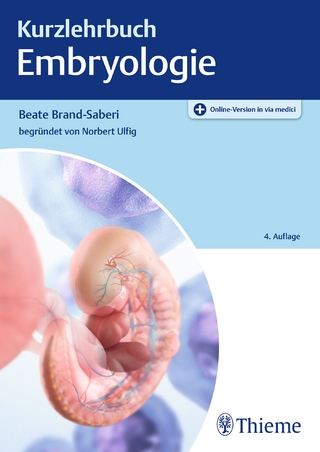
Lactation
Kluwer Academic / Plenum Publishers (Verlag)
978-0-306-41311-7 (ISBN)
- Titel ist leider vergriffen;
keine Neuauflage - Artikel merken
This basic information is accompanied by authoritative reviews of the nutritional and immunological properties of human milk and by clinically relevant chapters designed to help health care professionals deal with the medical problems of the breast-feeding mother and her infant. We have strived in these chapters for up-to-date, authoritative, but readable accounts. In so far as possible we have avoided areas where much of our understanding rests on speculation. In the clinical domain this was not always possible because of a lack of solid, scientific information about breast-feeding.
I. Introduction.- 1. An Introduction to Lactation and Breast-Feeding.- Evolution and Lactation.- Historical Perspectives on Milk Secretion.- Historical Perspectives on the Hormonal Control of Lactation.- Placenta versus Ovary in Mammary Development.- A Role for the Pituitary Gland.- The Hypothesis of Meites and Turner.- Multiple Hormonal Control.- The Role of the Placenta.- Historical Perspectives on Breast-Feeding.- Historical Alternatives to Breast-Feeding.- The Decline of Breast-Feeding.- Third-World Issues in Breast-Feeding.- References.- II. The Scientific Basis of Lactation.- 2. Anatomy of the Breast.- Anatomical Features of the Breast.- Surface Anatomy, Supporting Structures, and General Relationships.- The Nipple and Areola.- Vessels and Nerves.- Lymphatic Drainage.- Embryological Development.- Normal Development.- Anomalous Development.- Structure of the Mammary Gland.- General Features.- Inactive or Resting Stage.- Proliferative or Active Phase.- Lactation or Secretory Phase.- Regression, Involution, or Atrophy.- Summary.- References.- 3. The Mechanisms of Milk Secretion.- and Overview.- Cellular Mechanisms for Milk Synthesis and Secretion.- Changes in Milk Composition at Parturition.- The Secretion of Cells into Colostrum and Milk.- Suckling and the Ejection of Milk from the Breast.- Mammary Blood Flow.- Protein Synthesis, Processing, and Secretion in the Mammary Gland.- Properties of Milk Proteins.- Protein Precursors-The Transport of Amino Acids into Mammary Alveolar Cells.- Synthesis and Processing of Milk-Specific Proteins.- Regulation of Milk Protein Synthesis.- Immunoglobulin Secretion.- Conclusion.- The Synthesis of Milk Sugars.- Glucose Utilization in the Mammary Gland.- Lactose Synthesis.- Regulation of Lactose Synthesis.- Conclusion.- Secretion of Calcium, Phosphate, and Citrate into Milk.- The Role of the Golgi Secretory Vesicles in Calcium Secretion.- Possible Regulatory Activities of Calcium in the Mammary Gland.- The Secretion of Milk Lipid.- The Composition of Milk Fat.- Fatty Acid Synthesis in the Mammary Gland.- Lipoprotein Lipase and the Extraction of Lipids from Plasma.- Triglyceride Synthesis.- Cholestrol Secretion into Milk.- Phospholipids.- Milk Lipases.- Conclusions.- The Secretion of Monovalent Ions and Water into Milk.- Transcellular Ion Transport.- Paracellular Ion Transport.- Conclusions.- Trace Element Secretion into Milk.- Iron.- Zinc.- Iodine.- Selenium.- Sulfur.- Cobalt.- Conclusion.- Milk Secretion-Questions for the Future.- References.- 4. Regulation of Mammary Development and Lactation.- Stages in the Development of Mammary Function.- Mammogenesis.- Lactogenesis.- Lactation.- Involution.- Prolactin Secretion through the Life Cycle.- Milk Ejection and Oxytocin.- Oxytocin Synthesis and Release.- Interaction of Oxytocin with Myoepithelial Cells.- Conclusion.- Lactation and Postpartum Infertility.- Relation between Duration of Postpartum Amenorrhea and Breast-Feeding.- Reproductive Hormone Levels during Lactation.- The Mechanism of Postpartum Amenorrhea.- Conclusion.- Interactions between Food Intake and Lactation.- A Forward Look.- References.- 5. Cellular and Molecular Aspects of the Hormonal Control of Mammary Function.- Lactogenic Hormones.- Regulation of Prolactin Synthesis and Release.- Cellular Actions of Prolactin.- Placental Lactogen.- Conclusion.- The Role of Steroid Hormones in the Control of Mammary Function.- Estrogens.- Progesterone.- Glucocorticoids.- The Role of Insulin in Mammary Function.- The Role of Insulin in Mammary Growth.- The Role of Insulin in Lactogenesis and Lactation.- Effects of Insulin on Lipid Synthesis.- Conclusion.- Thyroid Hormones.- Prostaglandins.- Cyclic AMP.- Conclusion.- References.- 6. In Vitro Model Systems for the Study of Hormonal Control of Mammary Gland Growth and Differentiation.- Whole Gland Culture.- Explant Cultures.- Primary Culture.- Cell Culture.- General Conclusions.- References.- III. The Nutritional and Immunologic Significance of Mammary Secretions.- 7. Nutritional Aspects of Human Lactation.- Technical Difficulties in the Measurement of Milk Yield.- Composition of Human Milk.- Gross Composition.- Protein.- Fat.- Lactose.- Vitamins.- Minerals.- Trace Elements.- Nutritional Requirements for Lactation.- Recommended Daily Allowances.- Energy.- Protein.- Calcium.- Iron.- Vitamins.- Maternal Nutrition and Lactation Performance.- Volume.- Composition.- Incidence and Duration of Lactation.- Influence of Lactation on Maternal Nutritional Status.- Other Maternal Factors.- Human Milk in Infant Nutrition.- Growth.- Biochemical Considerations.- Dietary Supplementation.- Premature Infants.- Conclusions.- References.- 8. The Immunology of Breast Milk.- Antibodies.- Cellular Aspects of the Specific Immune Response.- Phagocytes and Complement.- The Secretory Immune System.- Immunologically Active Constituents of Breast Milk.- Nonspecific Factors.- Cells in Milk.- Functional Responses of Breast Milk Lymphocytes.- Immunologic Consequences of Breast-Feeding for the Baby.- Protection from Infection.- Protection from Allergic Reactions.- Breast-Feeding and Immunization.- Conclusions.- References.- IV. Medical Management of Breast-Feeding.- 9. Routine Management of Breast-Feeding.- Prenatal Period.- Role of the Health Professional in Breast-Feeding Education.- Prenatal Examination.- Management Plans.- Nipple Preparation.- Support Groups.- Intrapartum Period.- Hospital Policies.- Initiation of Nursing.- Common Early Problems.- The Normal Course of Lactation.- First Two Weeks.- Two Weeks.- Two Months.- Four Months.- Six Months.- Nine Months.- Twelve Months.- Late Nursing.- Nursing through Pregnancy.- Conclusion.- References.- 10. Infant Problems in Breast-Feeding.- The Premature or Sick Newborn.- Advantages of Human Milk in Feeding Preterm Infants.- Initiating Breast-Feeding in the Premature Infant.- Methods of Expressing Milk.- Maintaining the Milk Supply.- Surveillance and Storage of Milk.- Transition to the Breast.- Follow-Up.- Failure to Thrive.- Definition.- Etiologies of Lactation Failure-Maternal Factors.- Etiologies of Lactation Failure-Infant Factors.- Evaluation of Failure to Thrive.- Assessment and Plan.- Conclusion.- Cleft Lip and Palate.- Nursing Infants with Cleft Lip.- Nursing Infants with Cleft Palate.- Multiple Births.- Breast Milk Jaundice.- Phenylketonuria.- Hospitalization of the Infant or Mother.- Conclusion.- References.- 11. Maternal Problems in Lactation.- Lactation and Infectious Disease.- Mastitis.- Painful Nipples and Candida albicans.- Tuberculosis.- Herpes Viruses.- Rotaviruses.- Hepatitis B Virus.- Chronic Maternal Illness.- Psychiatric Illness.- Diabetes Mellitus.- Cystic Fibrosis.- Mammoplasty.- Relactation and Induced Lactation.- Conclusion.- References.- 12. Psychological Implications of Breast-Feeding for the Mother.- Breast or Bottled? The Decision-Making Process.- Psychodynamic Factors in the Decison Not to Breast-Feed.- The Influence of Significant Others.- The Time for Decision.- Attitudes and Personality Characteristics of Breast- and Bottle-Feeding Mothers.- Mother-Infant Attachment: The Importance of the Early Postpartum Period for the Mother-Infant Bond and the Establishment of Lactation.- Psychological and Hormonal Interaction in Breast-Feeding.- Psychological Factors in Milk Secretion.- Postpartum Blues.- Sexuality of Breast-Feeding Women.- Support Systems for Nursing Women.- Breast-Feeding and Family Life.- Medical Support Systems for the Expectant and New Mother.- La Leche League International.- Psychological Considerations in Weaning and Extended Nursing.- Conclusions.- References.- 13. Drugs, Toxins, and Environmental Agents in Breast Milk.- Drug Distribution.- Properties of Substances That Affect Their Distribution into Milk.- Quantitative Delivery of Pharmacologic Agents to the Newborn.- Oral Drug Absorption by the Infant.- Recognizing Drug Toxicity in the Infant.- Idiosyncratic and Allergic Drug Reactions.- Selective Drug Toxicity in Infants.- Neonatal Drug Accumulation.- Potential for Masking Medical Conditions.- Over-the-counter Medications.- Environmental Agents in Breast Milk.- Summary of Quantitative Considerations.- Review of Pharmacologic Classes of Drugs in Breast Milk.- Antimicrobial Drugs.- Analgesics and Psychotherapeutic Drugs.- Methylxanthenes.- Cardiovascular and Diuretic Agents.- Rubella Vaccination.- Antithyroid Drugs.- Anticoagulants.- Anticonvulsants.- Radio-Pharmaceuticals for Diagnostic Procedures.- Recreational Drugs.- Insecticides and Polychlorinated Biphenyls (PCBs) in Breast Milk.- Summary of Clinical Considerations.- Drugs That Affect Lactation.- Drugs That Inhibit Lactation.- Drugs That Enhance Lactation.- Summary.- References.- 14. Lactation and Contraception.- Methodoligic Concerns.- The Effects of Lactation on Fertility.- Endocrine Basis of Lactational Amenorrhea.- Conception and Lactation.- Summary.- Contraception during Lactation.- Abstinence.- Barrier Methods.- Rhythm or Natural Family Planning.- Postpartum Sterilization.- Intrauterine Devices.- Steroid Contraceptives.- Summary of Contraceptive Usage in Lactation.- References.- 15. Pregnancy, Lactation, and Breast Cancer.- Epidemiology.- Steroid Hormones and Breast Cancer.- Viruses and Breast Cancer.- Pregnancy, Lactation, and Breast Cancer: The Clinical Picture.- Summary.- References.
| Zusatzinfo | 38 black & white illustrations, biography |
|---|---|
| Verlagsort | Dordrecht |
| Sprache | englisch |
| Gewicht | 970 g |
| Themenwelt | Studium ► 1. Studienabschnitt (Vorklinik) ► Histologie / Embryologie |
| ISBN-10 | 0-306-41311-6 / 0306413116 |
| ISBN-13 | 978-0-306-41311-7 / 9780306413117 |
| Zustand | Neuware |
| Informationen gemäß Produktsicherheitsverordnung (GPSR) | |
| Haben Sie eine Frage zum Produkt? |
aus dem Bereich


